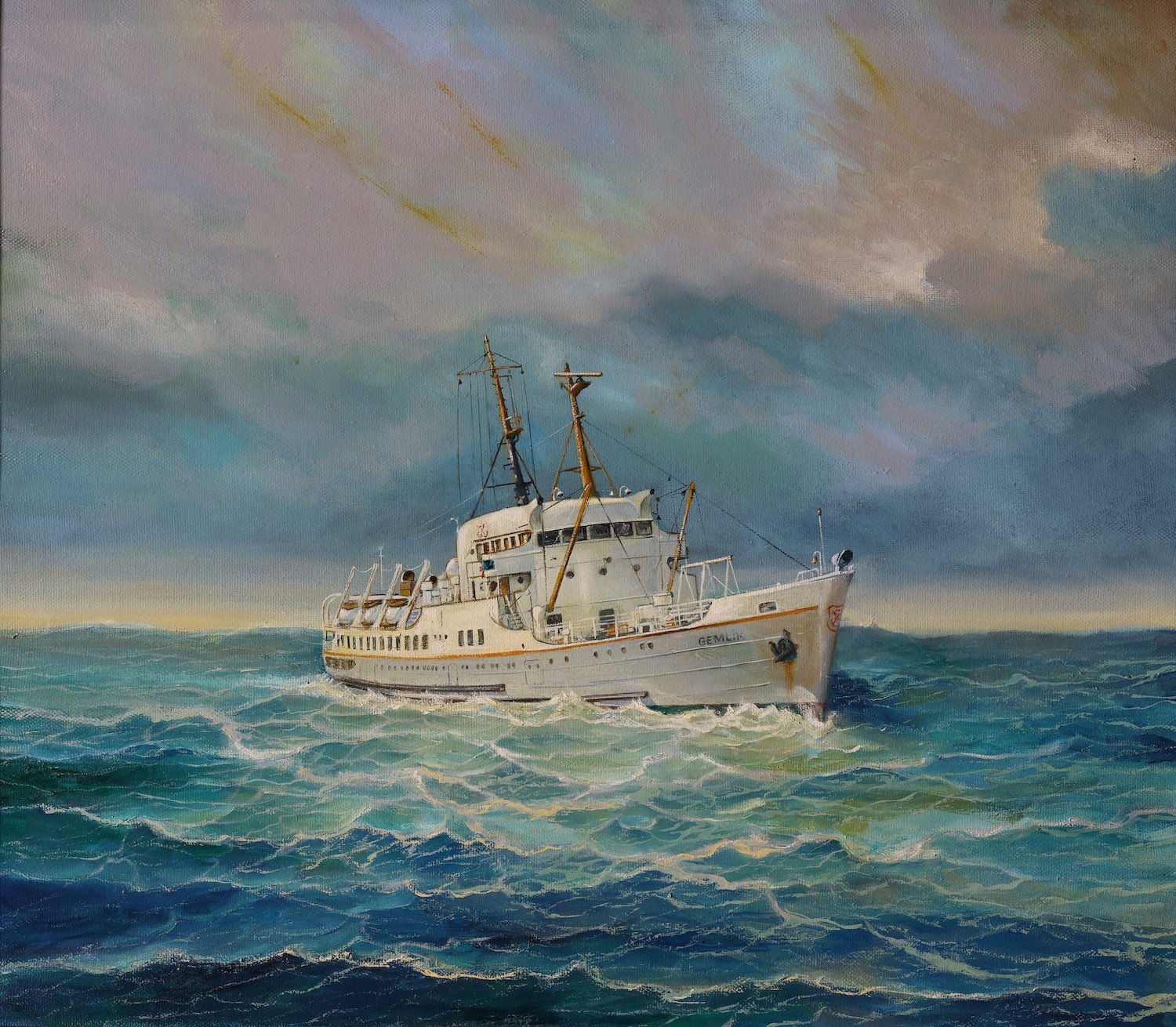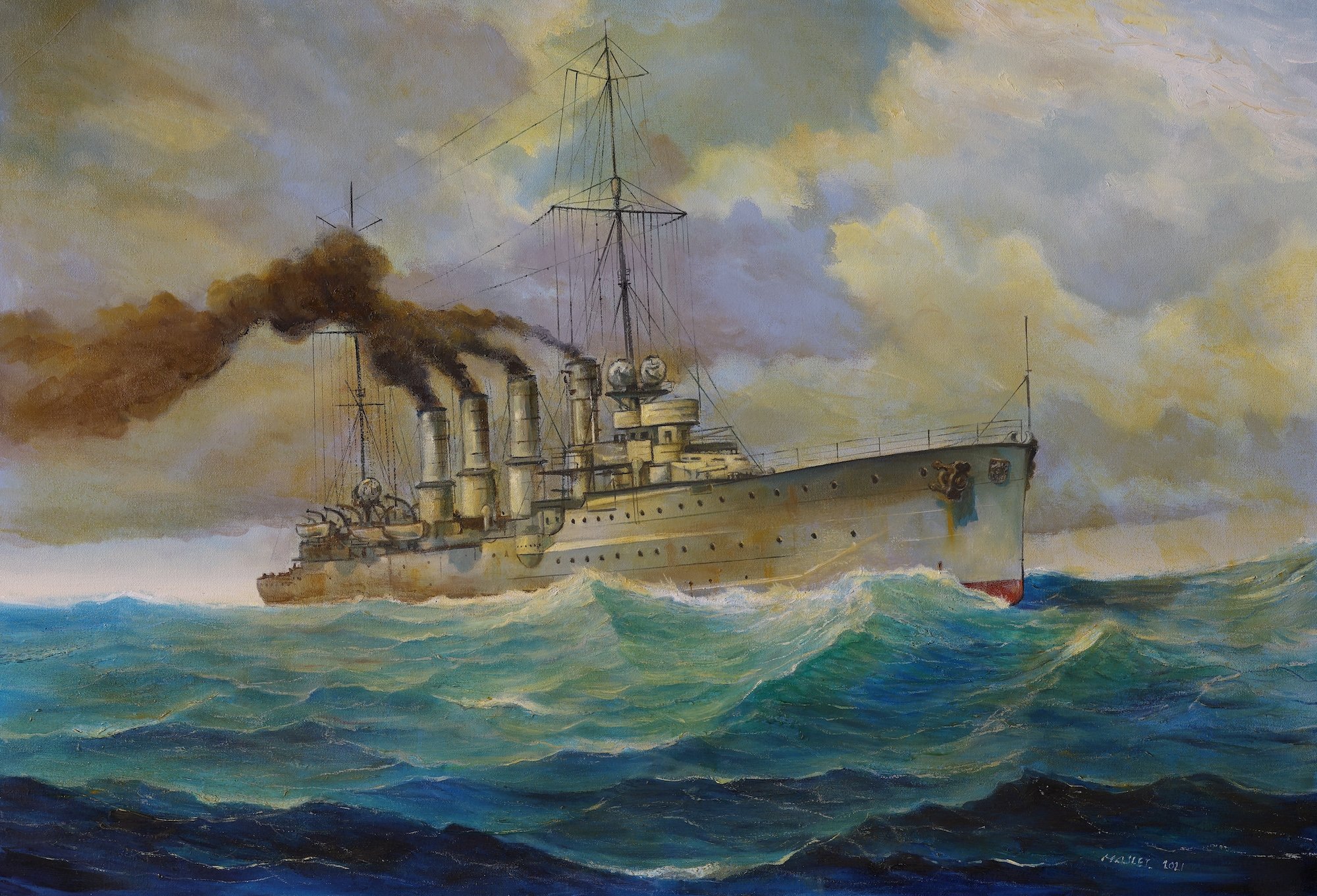© Turkuvaz Haberleşme ve Yayıncılık 2026
In a stunning celebration of Türkiye's rich maritime heritage, master cartoonist and painter Haslet Soyöz has unveiled his latest exhibition, "The Blue: Where Land Ends," at the prestigious Rahmi M. Koç Museum. The exhibition, which opened its doors on Oct. 26, features 26 exquisite oil paintings meticulously crafted by Soyöz, offering an insightful glimpse into the country's seafaring legacy.
Soyöz, a distinguished artist with an impressive career spanning nearly half a century, brings Turkish maritime history to life through his artwork. The exhibition pays homage to a diverse array of sea vessels, ranging from the iconic "Karadeniz," the world's first public relations ship, to the historic "Gülcemal," the first Turkish-flagged vessel that embarked on a monumental journey from the Black Sea to the United States
Soyöz brought together ships that were constructed mainly in major European shipyards such as the United Kingdom, the Netherlands, France, Germany and Norway, and later served in Turkish waters. The exhibition also includes an oil painting of the operational tugboat "Liman 2."

Regarding the exhibition featuring the sea vessels he painted between 2020 and 2022, Soyöz said: "I have been painting for about 25 years alongside my identity as a cartoonist. I particularly enjoy depicting the sea in my paintings because I have been fascinated by the sea since my childhood. It has been 20 years since I opened my first exhibition at Rahmi M. Koç Museum. For this one, I went through months of research, as I did in my previous exhibitions. I invite all art enthusiasts to discover the blue where the land ends."
Karadeniz: The world's first public relations ship, set sail in June 1926 under the direct order of Mustafa Kemal Atatürk. During its 86-day journey, S/S Karadeniz traveled to St. Petersburg, making 16 port visits in 12 European countries. The ship, painted in white, which was uncommon at the time, carried various souvenirs such as Anatolian tobacco products, Kütahya ceramics, Hacı Bekir Turkish delight and sweets, amber prayer beads, mouthpieces, various jewelry, as well as souvenir objects alongside jewelry arts, handwoven textiles, Turkish carpets, fabrics and antique items.

15 Numara: This tugboat, originally built as a steel vessel in the Netherlands in 1929, had a length of 12 meters. 15 Numara was used for docking ships and guiding them in Turkish waters for many years.
Ülev: Ordered by Atatürk himself in Germany to facilitate sea transportation to Yalova, Suvat, and Ülev served Istanbul for many years. Built in 1938, these ships operated on the Kadıköy and Princes' Islands route, maintaining their characteristics as city ferries with a capacity of 1603 passengers. They were among the last examples of paddlewheel steamers.
Gülcemal: The floating palace, originally named Germanic, was built in Ireland in 1874. In 1910, it was purchased by the Ottoman Navy Society and renamed "Gülcemal" after the mother of Sultan Mehmed Reşad, who passed away in childhood. Gülcemal hosted both the National Forces ("Kuvayi Milliye") heroes and German soldiers at different times. The transatlantic ship Gülcemal became the first vessel to sail from Türkiye to the U.S. with the Turkish flag in 1920. The photograph of Atatürk, positioned between two pillows embroidered with the symbol of the Maritime Lines, was taken on Gülcemal on June 5, 1926.
Gemlik: Built in the Netherlands in 1952, Gemlik arrived in Turkish waters as one of the most beautiful ships of its time. This ship, with its diesel engine and double rudder connected to it, sailed our seas until 1988 with its white color. M/V Gemlik, swaying in Turkish seas until 1988, was scrapped after a fire broke out during maintenance at the Istinye Shipyard.

Midilli: One of the two ships that led the Ottoman Empire into World War I, Breslau (Midilli), was laid down for the German Imperial Navy in 1910. The heavy cruiser Midilli, with a length of 138 meters, collided with mines and sank on Jan. 20, 1918, off Imbros during the early stages of the war.
